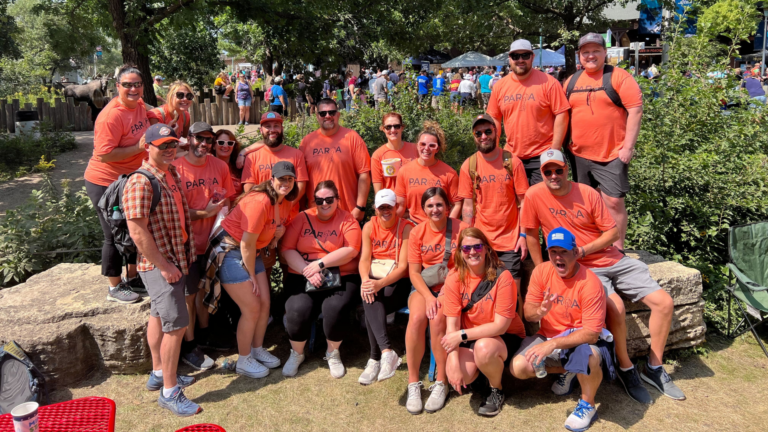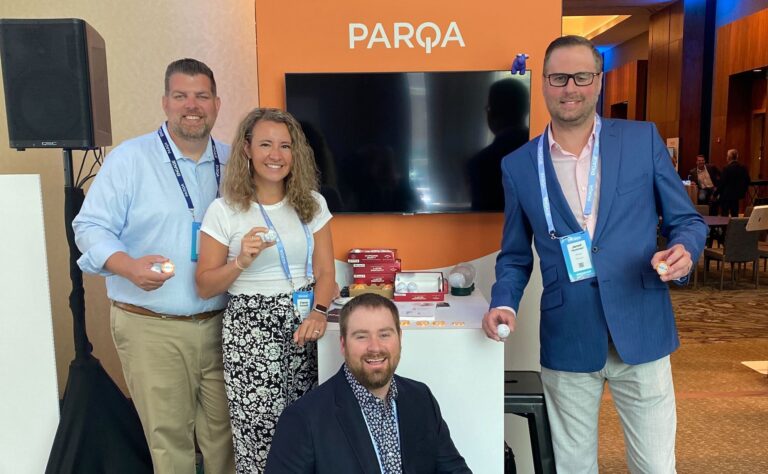Is your organization still relying on old-school recruiting methods like job boards and manual sourcing? If yes, it might be time to reconsider your approach to the more maddening elements of hiring—preferably, eliminating the madness altogether.
Candidate Communities have entered the chat.
More widely known as “talent communities” up until the last year or two, this is a relatively new and vastly more holistic way of thinking about and cultivating your “pool.” Think about it. A pool is stagnant. It doesn’t change, it doesn’t ebb and flow—it’s just … there.
A community, on the other hand, is thriving and interactive. There are interdependencies and a sense of belonging, support, shared experience and values.
In this article, our friends at Bullhorn define candidate communities as “long-term relationship management with candidates through value-based communication strategies and automations.”
We’ve covered how cultivating a candidate community maximizes your return on investment in so many ways. It enables staffing and recruiting firms to build and maintain a large and ready-to-deploy group of qualified and interested candidates—precision segmented based on their skills, educational qualifications, location, background, etc. And if you’ve treated your candidate community right, talent can be quickly assigned when job opportunities become available, and seamlessly redeployed, over and over again.
Here, we’ll cover some new angles on why candidate communities are key now, and some best practices for making yours as healthy and engaged as possible.
The Undeniable Benefits of Cultivating a Solid Candidate Community
Sure, establishing, growing and nurturing a candidate community is a large undertaking. But when done properly, it proves incredibly worthwhile.
With the staffing and recruiting industry growing faster than ever amidst a talent shortage, the talent community approach puts the right profiles of active and passive candidates at a recruiter’s fingertips at any time. This lets them pull candidates from their existing database rather than having to rely on job boards or other sourcing methods.
Here are just a few benefits of cultivating a strong talent community:
Proactively Attract and Source Top Recruits
Talent communities allow you to build genuine relationships with potential candidates before there’s even a job opening, and build upon those relationships between assignments. This way, you can identify top talent and build a pipeline of qualified candidates so you’re well-prepared for future hiring needs. Nobody likes to scramble at the last minute to find top talent, or pay for leads they likely already have in their database, right?
Boost Your Employer Brand
Building a candidate community can improve your company’s reputation as an employer of choice (hello, top talent magnet!) By providing valuable resources, content and opportunities for professional growth, you can position your company as a trusted resource and foster strong relationships with potential candidates. Win–win!
Enhance the Candidate Experience
By engaging with your talent community and providing valuable resources and opportunities, you can improve the candidate experience and enhance your company’s reputation—in turn, increasing the likelihood that top candidates will consider working for your company when a job opportunity arises. Plus, building strong relationships with talent community members can reduce turnover.
While the benefits are clear, it’s important to keep in mind that simply building your talent community isn’t enough. You must continually nurture and add value to your community to keep the members engaged.
Nurturing Top Talent for the Long Haul
As with any community management exercise, creating a talent community isn’t a “set-it-and-forget-it” type of thing. It’s more like an “into perpetuity” part of your business.
If you’ve ever been ghosted by a recruiter, then you understand just how off-putting it is to be scouted for a position, take an interview, and then … crickets.
With 3 out of 5 candidates wanting recruiters to reach out at least once a week with opportunities, poor community management is a clear faux pas that’s best avoided.
Maximizing the potential of your candidate community isn’t just about solely finding top talent to add volume to your database. The real key is to effectively nurture and manage those potential candidates to keep them engaged.
But don’t you worry. We won’t leave you to figure it out all by yourself.
Seven Best Practices for Building Highly Engaging Candidate Communities
1. Define Your Target Audience
First, you’ll want to clearly define your target audience. This will help you determine the types of candidates you want to attract, engage with and inform your outreach and engagement strategies. Keep in mind things like job function, industry, level of experience and other relevant demographic information to determine your target audience. Having a clear understanding of who your target audience is and what matters to them at various points in their candidate journey will help you create content and outreach strategies that are relevant and appealing to them.
For example, if your target audience is recent college graduates, you’ll want to focus your outreach efforts on college career fairs, popular social media platforms, and offering internships and entry-level job opportunities. You might also consider virtual interview tips or how to flesh out your resume if you don’t have a lot of experience just yet.
On the other hand, if your target audience is experienced professionals, you’ll likely shift your outreach to focus on industry events, professional associations and offering professional development opportunities. You might serve up tips for career transition, upskilling and professional development to stay marketable in a competitive landscape.
2. Establish Clear Communication Channels
Once you’ve defined your target audience, you need to establish clear communication channels and relevant messaging to reach and engage with them. Email marketing and social media marketing will be your friends here.
If your target audience is active on LinkedIn, consider using the platform to reach out to them with job postings, company news, or even for hosting virtual events and webinars tailored to their interests. Providing consistent and valuable content will further establish your company as an industry leader who cares enough to provide insights for free (a.k.a. the definition of thought leadership).
And when it comes to email marketing, sending a regular email newsletter with timely updates, tips and insights. Make sure to keep your email messages short and sweet with a clear call-to-action to respect your audience’s time and inbox while encouraging them to engage further with your company.
3. Make it Easy for Candidates to Connect with You
Lower the barrier to entry of consistent candidate communications by utilizing tools like online forms and chatbots. Making it easy for candidates to connect with you can help increase the number of interested and qualified prospects in your community, and make it easier for you to source the right talent when job opportunities become available.
Online forms can be used to allow candidates to submit their resume and professional information, as well as express their interest in working for your company. You can also take advantage of chatbots to answer common questions and provide information about your company and job opportunities. This is a great way to provide a 24/7 “presence” and demonstrate that your company invests in technology and the user experience.
4. Foster a Sense of Community
Make your candidates feel like they’re part of something worth their time by hosting events, webinars or other virtual or in-person gatherings to provide opportunities for networking and professional development. Creating a sense of community can help build strong bonds between your candidate community members and position your company as an attractive workplace.
You can even go the extra mile by creating online forums and discussion groups for your candidate community members to share ideas, knowledge and experiences, with the intention of building connections that can grow for years to come. This also gives you an opportunity to listen to your market and gain deeper insights on what matters to them most and the problems you can help them solve.
5. Offer Access to Exclusive Industry Content
Treat your candidates like true VIPs by offering exclusive access to resources or information that would typically be reserved for gated content. This can include blog posts, webinars and other forms of online content, as well as physical resources such as books, reports and white papers.
Providing your community members with resources on job search strategies, resume writing or even early or discounted access to industry events, conferences and other opportunities will keep them engaged while also positioning your company as a trusted resource, a true partner and an employer of choice.
6. Capture Key Data Points to Inform Your Strategy
Measuring and tracking the results of your candidate community management efforts is essential for continuously improving your strategies and achieving your goals. Consider using analytics tools to track key metrics such as the number of new members, engagement levels and the conversion rate of candidate community members to employees.
This data can help you understand what’s working well and what needs improvement to inform your strategies going forward. For example, if you find that your email newsletter has a low open rate, you may want to consider using A/B testing on your subject lines or switch up the frequency of your newsletter.
Side note: PARQA is a big proponent of a measurement strategy for understanding the performance of all your efforts. After all, true performance marketing isn’t guesswork—it’s data-driven and strategic.
7. Gather Feedback Regularly to Iterate and Improve Your Candidate Community Management Strategy
Finally, we recommend implementing a regular feedback-collection plan to improve your community-management efforts and achieve better results to ensure you’re achieving your goals and maximizing the potential of your candidate community. Surveys and focus groups are your top tools for understanding what the members of your candidate community value, what they need and what they want to see more of from you.
Get the Most Out of Your Unique Community
Your candidate community is only as strong as you make it. From defining your target audience and establishing clear communication channels, to providing value to your candidate community members and continuously evaluating and improving your strategies, effective candidate community management can be the difference between a so-so candidate experience and a stellar one that keeps them warm, engaged and ready to work with you the very next chance they get.
Ready to take the guesswork out of creating, growing and managing your candidate community?







